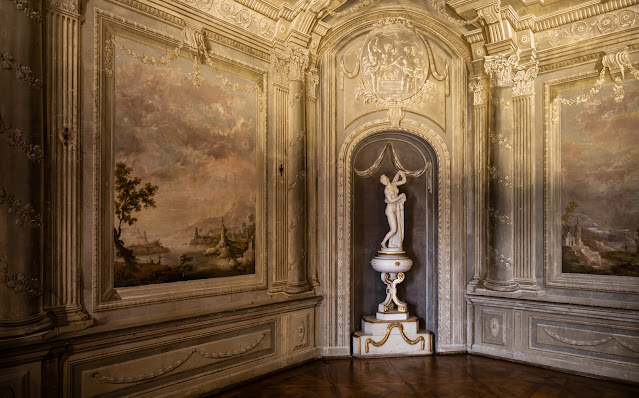Equivalence of ISO Noise on different Sensors
 |
Thanks to this site, I can demonstrate the equivalence of ISO noise on different sensors as explained in this blog posting. In various reviews on DPR, you can find a comparison tool which helps to estimate the quality of images. You can even download the JPG and the RAW files.
In the setup above, I compared three cameras in ISO6400. Although much higher ISO may be needed for special photography, even this ISO setting clearly shows the limits of the small sensors. As explained in much detail in this blog, those limits are often no real limits, because you can find equivalent settings in most everyday situations.
We study the differences not to bash small sensors,
but to learn how to handle them.
I am only interested in the details. So, here is a magnification.
The cameras shown here are the following. They all have comparable pixel counts.
- The "full frame" Nikon Z5(factor 1.0)
- The APS-C (aka DX) Nikon 7500 (factor 1.5).
- The Micro Four Third (MFT) Olympus OM-5 (factor 2.0).
- The Sony Cybers-shot DSC-RX100 VII (factor 2.7).
Clearly, the noise gets worse in each step down the sensor size. The Nikon Z5 does no longer produce a clean image, of course, but a useable one. I allow it to go up to ISO1600 which is sufficient for my photography. The image at the start of this posting has been taken with ISO1600.
However, we can also use the tool to compare equivalent ISO settings. For this, we decrease the ISO approximately by the square of the sensor factor.
Now, the images look quite similar. Any differences may be due to the lenses that have been used by DPR. As far as I know, they used the best prime lenses for these shots.
We learn that there are equivalent ISO settings
which simply depend on the sensor size.
As explained in other postings, you can compensate these settings with different apertures if you want the same DOF and background blur. In many situations, you get equivalent images.
Here is another spot.
If you are shooting out-of-camera (OOC) in JPEG format, the results depend on the noise reduction of your camera.
The Nikon Z5 was set by DPR to a very aggressive noise reduction. I do not like that result because many details are lost.
Of course, any noise reduction in post-processing applied to the RAW file is superior to the in-camera processing. There is no magical internal way to process RAW files in these cameras. Note, that some cameras (including the Sony RX100) have a way to combine multiple shots to one with higher quality or HDR. This is another story.
We need to be aware that the equivalent ISO settings require a different f-stop or a different shutter speed. In the case of wildlife photography, the shutter speed must be high enough and is thus set. So, you need a wider aperture to get the same image quality. But that yields higher costs and bigger lens size which destroys the advantage of the smaller camera. So, I would say that the bigger sensor is an advantage when it comes to low light. I have discussed this with examples already in another posting.
The choice of the sensor is not easy. All sensors provide advantages in some situations, and disadvantages in others. E.g., the Sony RX100 is a pocketable camera. This is hard to beat, even with MFT. In fact, the OM cameras are rather huge for MFT. With comparable lenses, I see no size advantage over the Nikon Z5 (see the image below).
There are small MFT cameras, however, and also small telephoto lenses. For hiking birders, those might be worth a consideration.






Comments
Post a Comment